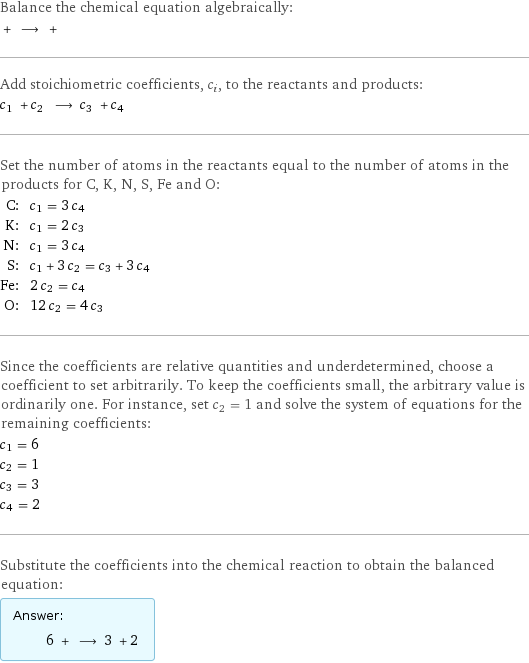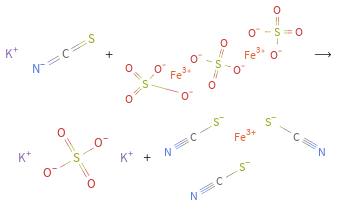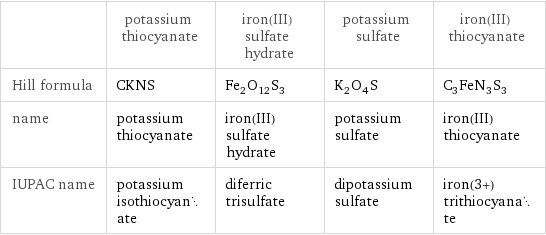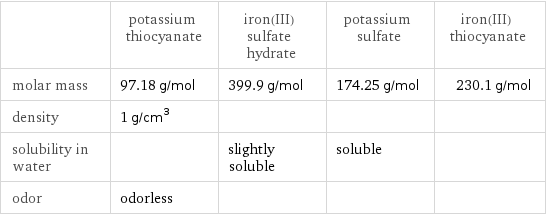Input interpretation

potassium thiocyanate + iron(III) sulfate hydrate ⟶ potassium sulfate + iron(III) thiocyanate
Balanced equation

Balance the chemical equation algebraically: + ⟶ + Add stoichiometric coefficients, c_i, to the reactants and products: c_1 + c_2 ⟶ c_3 + c_4 Set the number of atoms in the reactants equal to the number of atoms in the products for C, K, N, S, Fe and O: C: | c_1 = 3 c_4 K: | c_1 = 2 c_3 N: | c_1 = 3 c_4 S: | c_1 + 3 c_2 = c_3 + 3 c_4 Fe: | 2 c_2 = c_4 O: | 12 c_2 = 4 c_3 Since the coefficients are relative quantities and underdetermined, choose a coefficient to set arbitrarily. To keep the coefficients small, the arbitrary value is ordinarily one. For instance, set c_2 = 1 and solve the system of equations for the remaining coefficients: c_1 = 6 c_2 = 1 c_3 = 3 c_4 = 2 Substitute the coefficients into the chemical reaction to obtain the balanced equation: Answer: | | 6 + ⟶ 3 + 2
Structures

+ ⟶ +
Names

potassium thiocyanate + iron(III) sulfate hydrate ⟶ potassium sulfate + iron(III) thiocyanate
Chemical names and formulas

| potassium thiocyanate | iron(III) sulfate hydrate | potassium sulfate | iron(III) thiocyanate Hill formula | CKNS | Fe_2O_12S_3 | K_2O_4S | C_3FeN_3S_3 name | potassium thiocyanate | iron(III) sulfate hydrate | potassium sulfate | iron(III) thiocyanate IUPAC name | potassium isothiocyanate | diferric trisulfate | dipotassium sulfate | iron(3+) trithiocyanate
Substance properties

| potassium thiocyanate | iron(III) sulfate hydrate | potassium sulfate | iron(III) thiocyanate molar mass | 97.18 g/mol | 399.9 g/mol | 174.25 g/mol | 230.1 g/mol density | 1 g/cm^3 | | | solubility in water | | slightly soluble | soluble | odor | odorless | | |
Units
